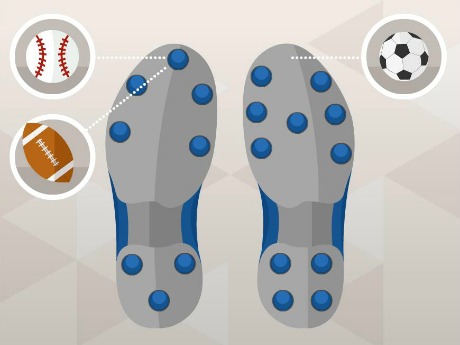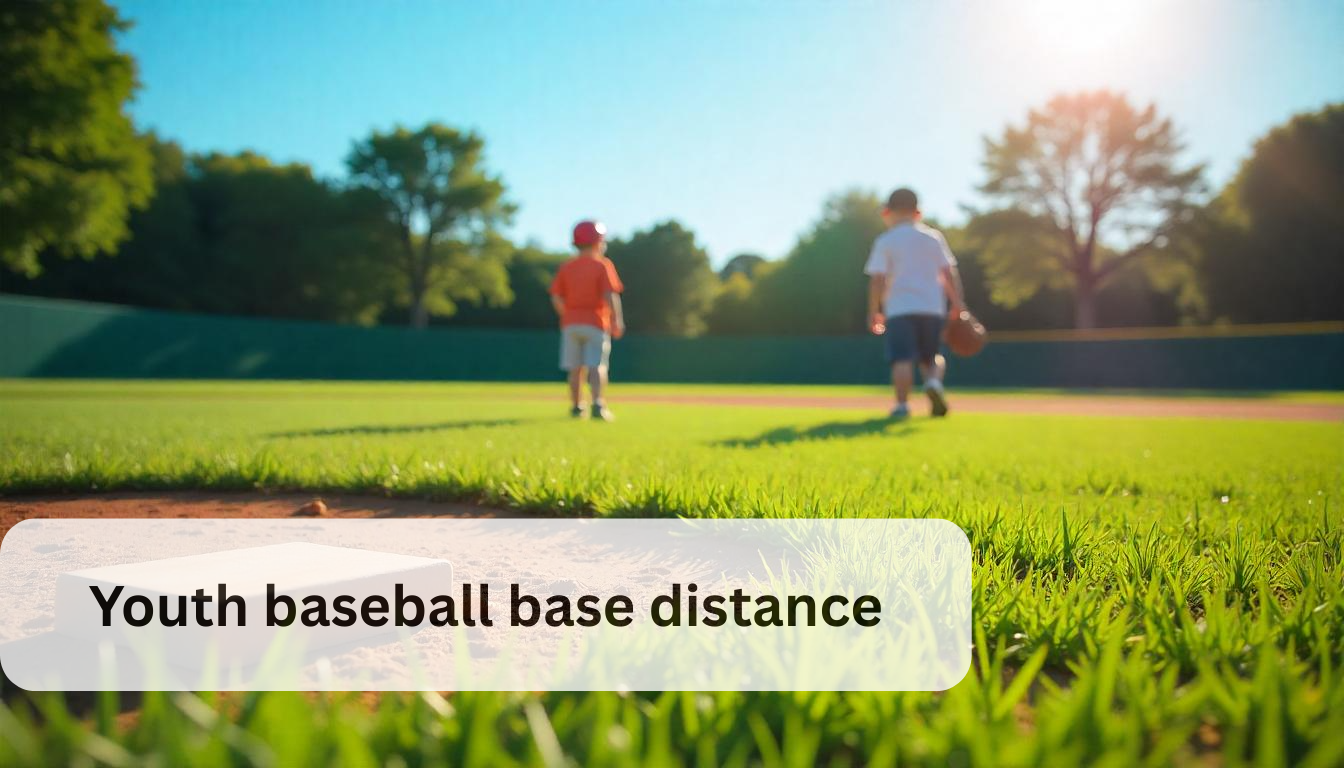Soccer cleats and baseball cleats are essential gear for players. Each type serves its unique purpose.
Choosing the right cleats is crucial for performance and safety. Soccer cleats are designed for agility and ball control. Baseball cleats focus on traction and stability on dirt and grass. Understanding the differences can help you make an informed decision.
This comparison will guide you through the key features of each. You will learn about their design, materials, and functionality. By the end, you’ll know which cleats suit your sport best. Let’s dive into the world of soccer and baseball cleats and discover what sets them apart.
Design Differences
Soccer and baseball cleats may seem similar at first glance, but they have distinct design differences. These differences are crucial for performance and safety. Understanding these can help you choose the right cleats for your sport.
Shape And Structure
Soccer cleats have a low profile. This design allows for better ball control. They usually do not have a toe spike. The cleats are evenly spaced. This helps with quick movements and changes in direction.
Baseball cleats, on the other hand, feature a higher cut. This provides extra ankle support. They often have a toe spike. This helps players gain traction for explosive sprints. The cleats are longer and sharper. This design improves grip on dirt and grass fields.
Material And Weight
Soccer cleats are typically made from lightweight materials. Synthetic leather and knit fabrics are common. This ensures the cleats are light and flexible. Players can move quickly and feel the ball better.
Baseball cleats use heavier materials. Genuine leather and durable synthetics are popular choices. This makes the cleats more robust. They can withstand the rigors of a baseball field. The added weight also provides extra stability during play.
Traction And Grip
Traction and grip are crucial in soccer and baseball. Cleats provide the necessary grip, ensuring players maintain control on various surfaces. The design of cleats varies between sports, affecting traction and performance.
Surface Interaction
Soccer cleats interact differently with the ground compared to baseball cleats. Soccer cleats have shorter studs. These studs help players move quickly on grass or turf. They prevent slipping during fast-paced actions.
Baseball cleats, on the other hand, have longer studs. These studs dig deeper into dirt or grass fields. They provide stability during running and sudden stops. This is essential for fielding and batting.
Weather Conditions
Weather conditions play a significant role in cleat performance. Soccer cleats are designed for various weather scenarios. They offer good grip on wet and dry fields. The studs are positioned to shed mud, maintaining traction.
Baseball cleats also consider weather. In wet conditions, longer studs prevent slipping on muddy fields. Some baseball cleats come with metal spikes for enhanced grip. These are useful in different weather but may not be allowed in all leagues.
Comfort And Fit
Choosing the right cleats is essential for any athlete. Comfort and fit play a major role in performance. Soccer and baseball cleats differ in design. These differences impact foot support and breathability. Let’s dive into these aspects.
Foot Support
Soccer cleats provide strong support for quick movements. They have a snug fit. This prevents slipping inside the shoe. The low-cut design allows ankle mobility. The cleats are spread out to enhance traction.
Baseball cleats focus on stability. They have a higher cut for better ankle support. This is crucial for sudden stops and starts. The sole is stiffer to provide a solid base for batting and fielding.
Breathability
Breathability is key for comfort. Soccer cleats use lightweight materials. These materials allow air to flow. This keeps feet cool during long matches.
Baseball cleats also consider breathability. They use mesh panels for ventilation. This is important during hot summer games. Proper air circulation prevents excessive sweating.
| Feature | Soccer Cleats | Baseball Cleats |
|---|---|---|
| Foot Support | Snug fit, low-cut design | Higher cut, stiff sole |
| Breathability | Lightweight materials, good airflow | Mesh panels, good ventilation |
Credit: cdn1.sportngin.com
Durability
Choosing the right cleats can make a big difference in your athletic performance. Durability is a key factor to consider. Soccer and baseball cleats are designed differently, affecting how long they last. Let’s dive into the durability aspects of both types of cleats.
Wear And Tear
Soccer cleats are built for constant movement on grass or turf. They often face intense wear and tear due to running, kicking, and sudden direction changes.
Baseball cleats, on the other hand, endure less frequent but more intense bursts of activity. Sliding into bases or sprinting can wear down the cleats, especially the metal spikes.
| Soccer Cleats | Baseball Cleats |
|---|---|
| Constant movement | Frequent bursts |
| Grass or turf | Dirt and grass |
| Softer material | Metal spikes |
Maintenance Tips
Proper maintenance can extend the life of your cleats. Here are some essential tips for both soccer and baseball cleats:
- Clean them regularly.
- Dry them properly after use.
- Check for damage often.
Soccer Cleats: Use a soft brush to remove dirt. Avoid water damage by drying them in a shaded area.
Baseball Cleats: Clean the spikes thoroughly. Dry them completely to prevent rust and wear.
Following these tips can help your cleats last longer, saving you money and ensuring better performance on the field.
Performance Impact
Soccer and baseball cleats have a significant impact on player performance. The design and function of each type of cleat cater to the specific needs of each sport. Understanding these differences can help athletes choose the right footwear for their game.
Speed And Agility
Soccer cleats are designed for quick changes in direction and bursts of speed. They have a low-cut design that allows for greater ankle movement. The studs on soccer cleats are shorter and more evenly distributed. This provides better traction on grass or turf.
Baseball cleats, on the other hand, focus on explosive speed and grip. They have longer studs that dig into the dirt, providing stability during sprints and quick stops. The higher cut of some baseball cleats offers more ankle support, which is crucial for sudden movements.
Stability And Balance
Stability is crucial in both soccer and baseball, but the requirements differ. Soccer cleats have a lightweight design to maintain balance during dynamic play. The flexibility of the cleat allows for better ball control and footwork.
Baseball cleats prioritize stability for hitting, fielding, and running bases. Their design supports the foot during lateral movements and powerful swings. The sturdy build of baseball cleats helps maintain balance on uneven surfaces like dirt and grass.
Choosing the right cleat can enhance your performance in soccer or baseball. Consider the specific needs of your sport and the design features of each cleat.

Credit: www.activekids.com
Injury Prevention
Injury Prevention is a crucial aspect to consider when choosing between soccer and baseball cleats. The right cleats can significantly reduce the risk of injuries, which can range from minor to severe. Understanding the common injuries associated with each sport and the protective features of their respective cleats can help you make an informed decision.
Common Injuries
Both soccer and baseball players are prone to specific injuries due to the nature of their sports. Below is a table highlighting the common injuries for each sport:
| Sport | Common Injuries |
|---|---|
| Soccer |
|
| Baseball |
|
Protective Features
Soccer cleats and baseball cleats are designed with specific features to protect players from these common injuries. Let’s look at the protective features of each:
- Soccer Cleats
- Firm grip for quick direction changes
- Low-profile design for ankle mobility
- Cushioned insoles for shock absorption
- Baseball Cleats
- Reinforced toe cap for added protection
- Metal or molded spikes for stability
- High-top options for ankle support
Choosing the right cleats with the appropriate protective features can greatly reduce the risk of injuries. Always prioritize safety and comfort to keep yourself in the game longer.
Cost And Value
When comparing soccer and baseball cleats, cost and value are important factors. Understanding the differences can help in making an informed purchase. Let’s delve into the details.
Price Range
Soccer cleats vary in price based on brand and quality. Entry-level cleats can cost around $30. High-end models can reach up to $300. The wide range caters to different needs and budgets.
Baseball cleats have a similar pricing structure. Basic models start at about $20. Premium cleats can be priced at $200 or more. The cost often reflects the material and design quality.
Longevity
Soccer cleats usually last one to two seasons with regular use. The durability depends on the playing surface and care taken. Proper maintenance can extend their life.
Baseball cleats can also last one to two seasons. Their longevity is influenced by the playing field and frequency of use. Regular cleaning and storage improve their lifespan.
In both sports, investing in a higher-priced cleat can result in better durability. Weighing the cost against expected use can guide you to the best choice.

Credit: currex.com
Frequently Asked Questions
What Are The Main Differences Between Soccer And Baseball Cleats?
Soccer cleats are lighter and have more traction. Baseball cleats have a reinforced toe and are often heavier. Both are designed for specific field conditions and sports needs.
Can You Use Soccer Cleats For Baseball?
Using soccer cleats for baseball is not recommended. Soccer cleats lack the toe reinforcement and specific traction needed for baseball. It can affect performance and safety.
Are Baseball Cleats More Durable Than Soccer Cleats?
Baseball cleats are generally more durable. They have reinforced toes and are built for tougher field conditions. Soccer cleats focus on lightness and flexibility, which can reduce durability.
Do Soccer Cleats Provide Better Traction Than Baseball Cleats?
Soccer cleats usually provide better traction on grass and turf. They are designed for quick, multidirectional movements. Baseball cleats offer specialized traction for dirt and grass baseball fields.
Conclusion
Choosing the right cleats depends on your sport. Soccer cleats offer agility and control. Baseball cleats provide grip for quick movements. Each type serves its purpose on the field. Consider the sport, playing style, and surface. Comfort and fit also matter.
Try different brands and models. Ensure they meet your needs. A good fit enhances performance and reduces injury risk. Invest time in making an informed choice. Your feet will thank you.




